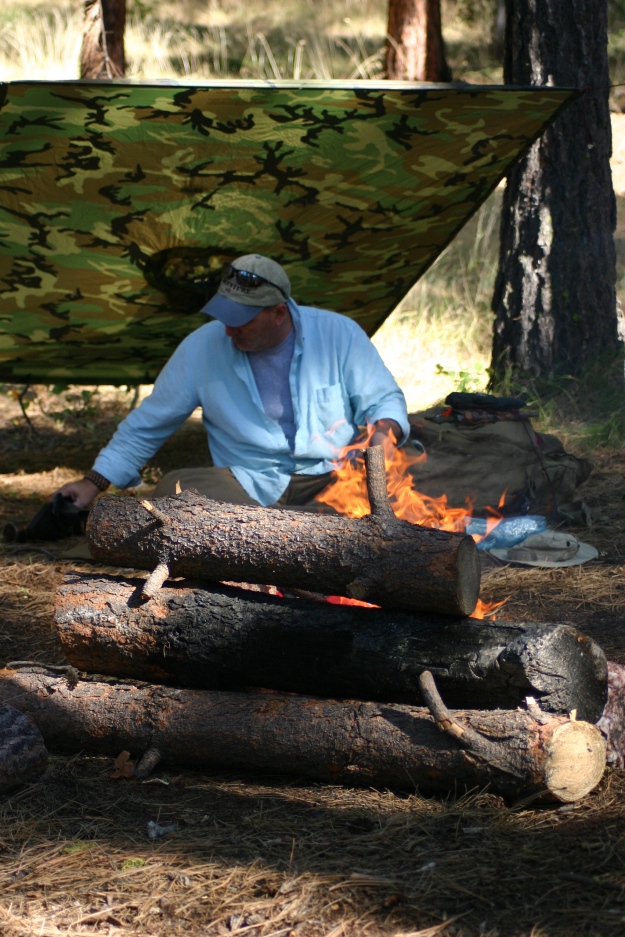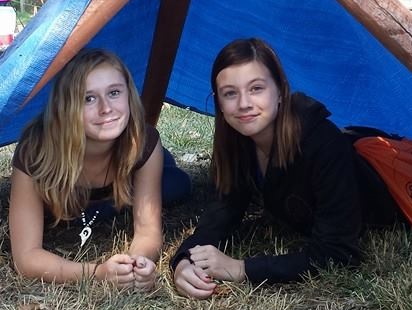
A shelter can protect you from the heat of the sun, insects, wind that either zaps warmth or moisture from your body, rain, snow, hot or cold temperatures. It is the center-point of your Comfort Zone and gives you a feeling of safety and well-being. It can help you maintain your will to survive.
In the rule of 3‘s, we discuss the need to protect yourself from exposure. You can go three days without water, but only 3 hours in extreme cold or heat conditions. In some areas, the need for shelter may take priority over your need for food and possibly even your need for water. As an example, prolonged exposure to cold can cause excessive fatigue and weakness (exhaustion). An exhausted person may either develop a “passive” outlook, thereby losing the will to survive or make decisions that further jeopardizes their situation.
One of the most common errors in making a shelter is to make it too large. A shelter must be large enough to protect you from the elements, but also small enough to contain your body heat, especially in cold climates.
6 W’s of Creating Shelter in You Comfort Zone
When establishing your shelter and your Comfort Zone, understand the first shelter may not be your permanent shelter. When you find yourself in a situation, you often need to take immediate action and get under cover. Intense heat, driving rain, or waiting the night out may all be reasons you move to protect yourself by sheltering, and then moving or creating a shelter in a Comfort Zone. When you go to set up your shelter and establish a Comfort Zone, use the 6W’s to help you establish the area you’re going to call home.
The 6 W’s include:
Weather- You can quickly die of exposure. Let’s make sure you set up to protect yourself against the elements.
If it’s hot and you have to get out of the sun, then set up a tarp that you can crawl under for protection. Even if you only put it up 18” high, you will benefit from the cooler space that sits at the 12” and below area.

In colder weather, keep your tarp low so it can capture heat from either your body or the fire pit you establish. If it looks like rain, make sure you can figure out a way to stay dry or even use your shelter to capture water to drink later.
Wood– If your not building a shelter with it, your creating fire for warmth, cooking, comfort, or purifying water. You can also use it for making tools and other creature comforts. Look for areas where there is a good supply of wood before settling in to establish your Comfort Zone.
Water- Even if you don’t have water in your Comfort Zone, either know where it is or how you are going to procure it. In some cases, you may need to move your Comfort Zone to where you can obtain water.
Widow Makers- That which does not kill you will make you stronger, unless you’re that guy in Utah that had to cut off his arm with a multi-tool. Widow makers are anything that can turn your rescue into a recovery operation. When setting up shelter look for overhanging branches, potential rock slides, a boulder that just needs the nudge of cold-night air to slip, or anything that could hurt or kill you. Avoid these areas at all cost.
Wingers- Anything that buzzes in the air and bites or stings needs to be avoided if possible. Fly’s carry disease, Bees and Wasp leave nasty stings and can be an extreme danger, and Mosquitos cause ailments such as Malaria. To one degree, the smoke from your fire can minimize the issues of flying insects but when selecting a site try to avoid areas of insect concentration.
Wigglers- Anything that crawls on the ground that bites, stings, sucks, etc. Ants, snakes, scorpions, eve centipedes. Some of these you can avoid by not building in their nest, others you just have to keep an eye out for. Before you go out, do a little research on the threats in your area. Don’t overlook the tick threat in your area as well.

If you have attended my workshop on shellers you know I’m a fan of keeping a tarp and light-weight tent stakes in your pack–saves time and calories over making one from scratch.
